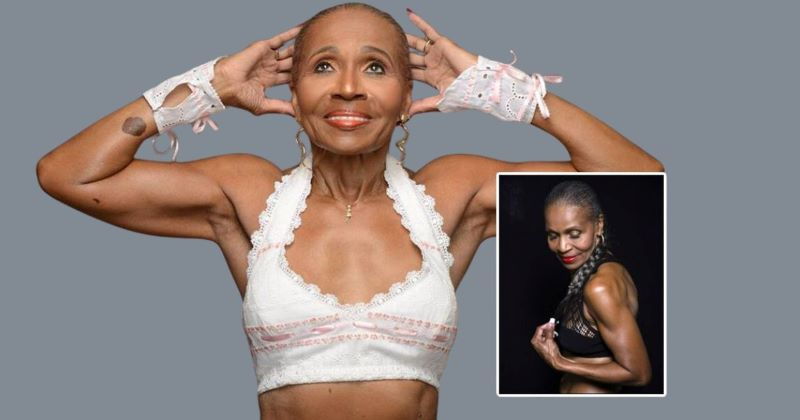Early Life and Background
Ernestine Harvin Campbell, born on October 31, 1935, in Washington, D.C., was an American secretary who gained public attention primarily through her marriage to the legendary rock musician Little Richard.
Raised in the capital, details about her early life, including her family background, remain largely private, as she was known for leading a low-key lifestyle. Despite marrying one of the most influential figures in rock and roll history, Ernestine preferred to stay out of the limelight.
Meeting Richard
Ernestine Harvin Campbell’s story intertwined with that of Richard Wayne Penniman, famously known as his, in a rather unconventional setting. The couple first met at an evangelical rally in California in October 1957.
At the time, He was already making waves in the music industry with hits like “Tutti Frutti” and “Long Tall Sally.” Their relationship blossomed quickly, leading to a marriage on July 12, 1959. This union marked a significant moment in their lives, as it was his only legal marriage.
Source: https://suportrevup.com/
Marriage and Challenges
The marriage between Ernestine Harvin and Richard lasted approximately five years, during which they faced numerous challenges. On one hand, his rising fame brought attention and success, but on the other, it strained their relationship.
Ernestine Harvin Campbell found coping with her husband’s celebrity lifestyle difficult, which she described as consuming much of his time and energy. She valued privacy and struggled with the constant public scrutiny of being married to a rock star.
In 1964, the couple divorced, with her citing a chaotic lifestyle and difficulties stemming from sexuality as contributing factors. Richard, who later spoke candidly about his sexual orientation, expressed that struggles with identity and the pressures of fame had taken a toll on their marriage.
Children and Adoption
While Ernestine Harvin Campbell and Little Richard had no biological children, the couple adopted a son named Danny Jones Penniman in 1984. Danny was the biological son of Creola Jones, a long-time friend of his.
After the death of Danny’s father, Creola asked him to adopt him to provide a stable life away from the hardships of his biological family’s situation. Danny grew up under the guidance of Richard, who often imparted valuable life lessons.
He would share wisdom about life and finances, emphasizing the importance of self-control and financial independence. Tragically, Danny lost both parents but found a sense of stability and love at home. He later joined his father on various tours, often acting as bodyguard.
Ernestine’s Later Years
After divorcing Little Richard, Ernestine Harvin Campbell largely stepped away from the public eye. 1975, she remarried McDonald Campbell, but little is known about her life following that marriage. She chose to keep life private, which contrasts sharply with the public lifestyle of her former husband.
She passed away on May 9, 2010, at the age of 74. The reasons for death remain undisclosed, and she was buried in an unmarked grave. Her passing, while quiet, reflected her life of modesty and discretion.
Legacy and Richard’s Reflections
Little Richard remained vocal about past marriages and relationships throughout his life. In a 2017 interview, he regretted his divorce from Ernestine, acknowledging the impact of fame and personal struggles on their relationship. He affirmed that marriage to her was filled with love despite their challenges.
His reflections on their time together and his subsequent revelations about sexuality and faith highlight the complexities of identity and the music industry’s influence. Though short-lived, the couple’s relationship is a poignant chapter in the narrative of one of rock and roll’s most iconic figures.
Conclusion
Ernestine Harvin Campbell’s life story may not be as widely known, yet her connection to Little Richard marks her place in the tapestry of rock and roll history. Her experiences, challenges, and the quiet strength she exhibited provide an important counterpoint to the flamboyant persona of her husband.
Together, they navigated the intersections of marriage, fame, and identity, leaving behind a legacy that reflects the intricacies of personal relationships within the public eye.

At Villa Corona Mexican Grill, we’re passionate about sharing our love for authentic Mexican seafood dishes with food enthusiasts like you. Dive into our feed to discover mouthwatering photos and videos of our delectable ceviches, fish tacos, shrimp cocktails, and more. We’ll take you on a culinary journey through Mexican coastal cuisine’s vibrant flavors and rich traditions.
Get ready to tantalize your taste buds and embark on a flavorful adventure with us. Follow, like, and share to become part of the Villa Corona Mexican Grill family today! 🌊🍤🌶️ #MexicanSeafood #VillaCoronaMexicanGrill

